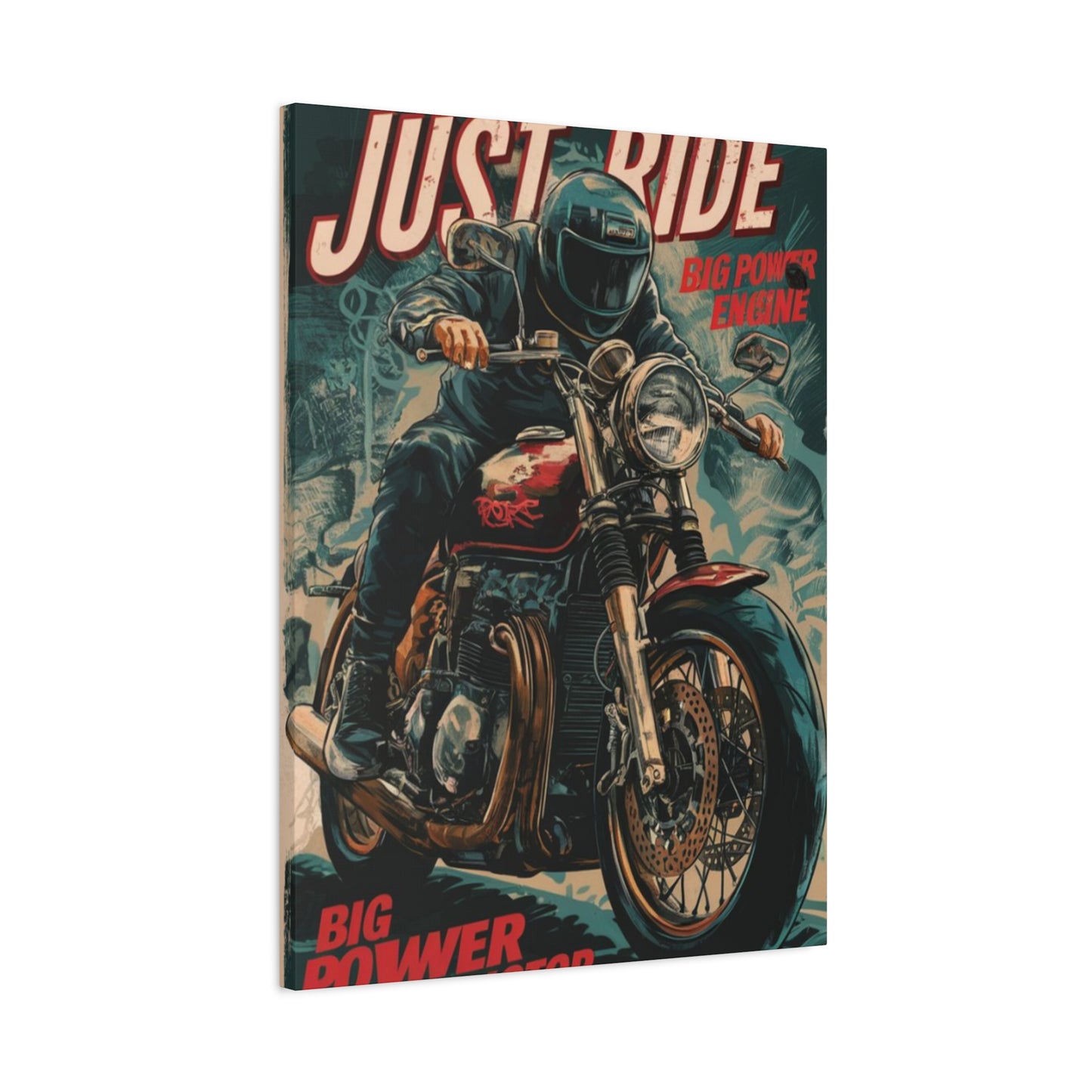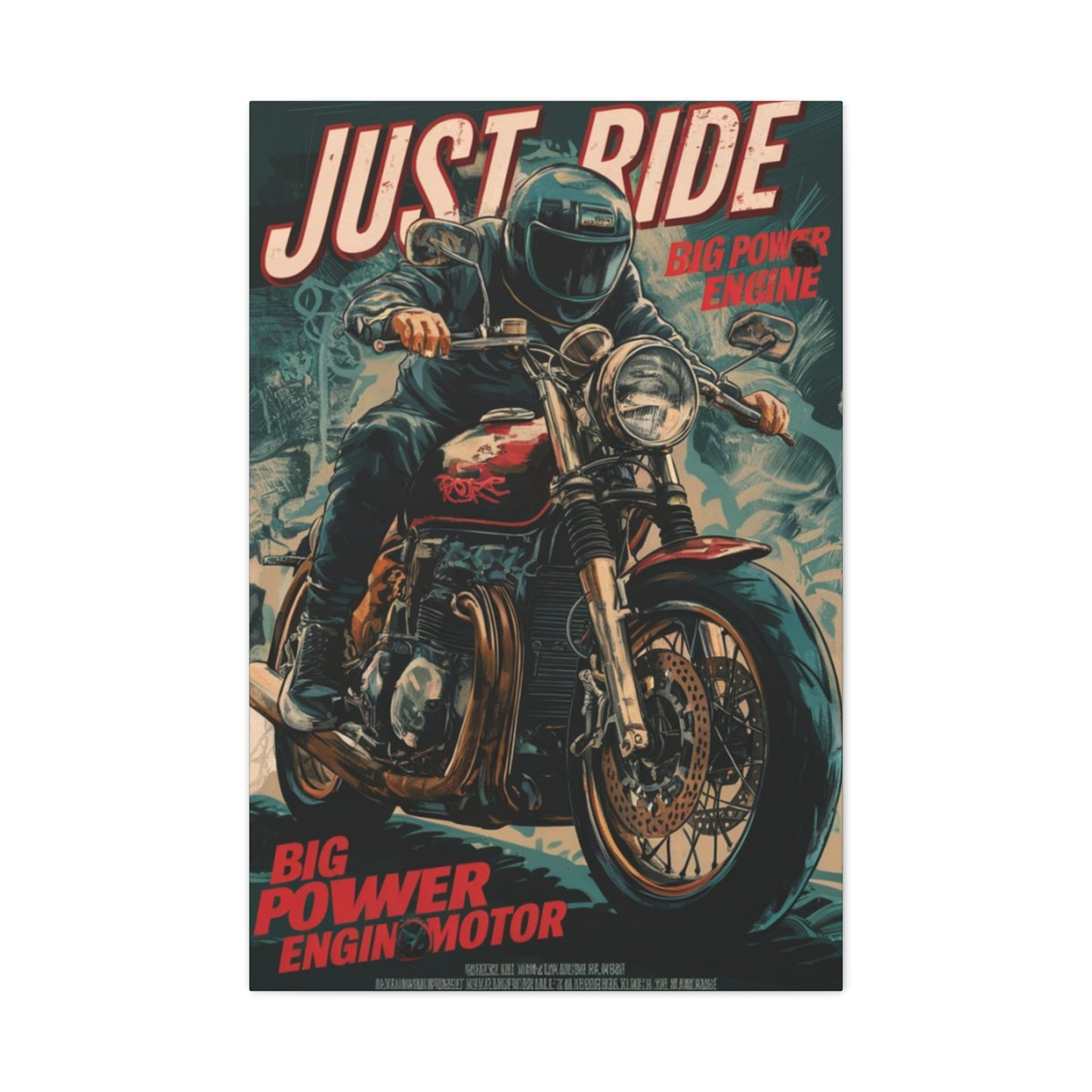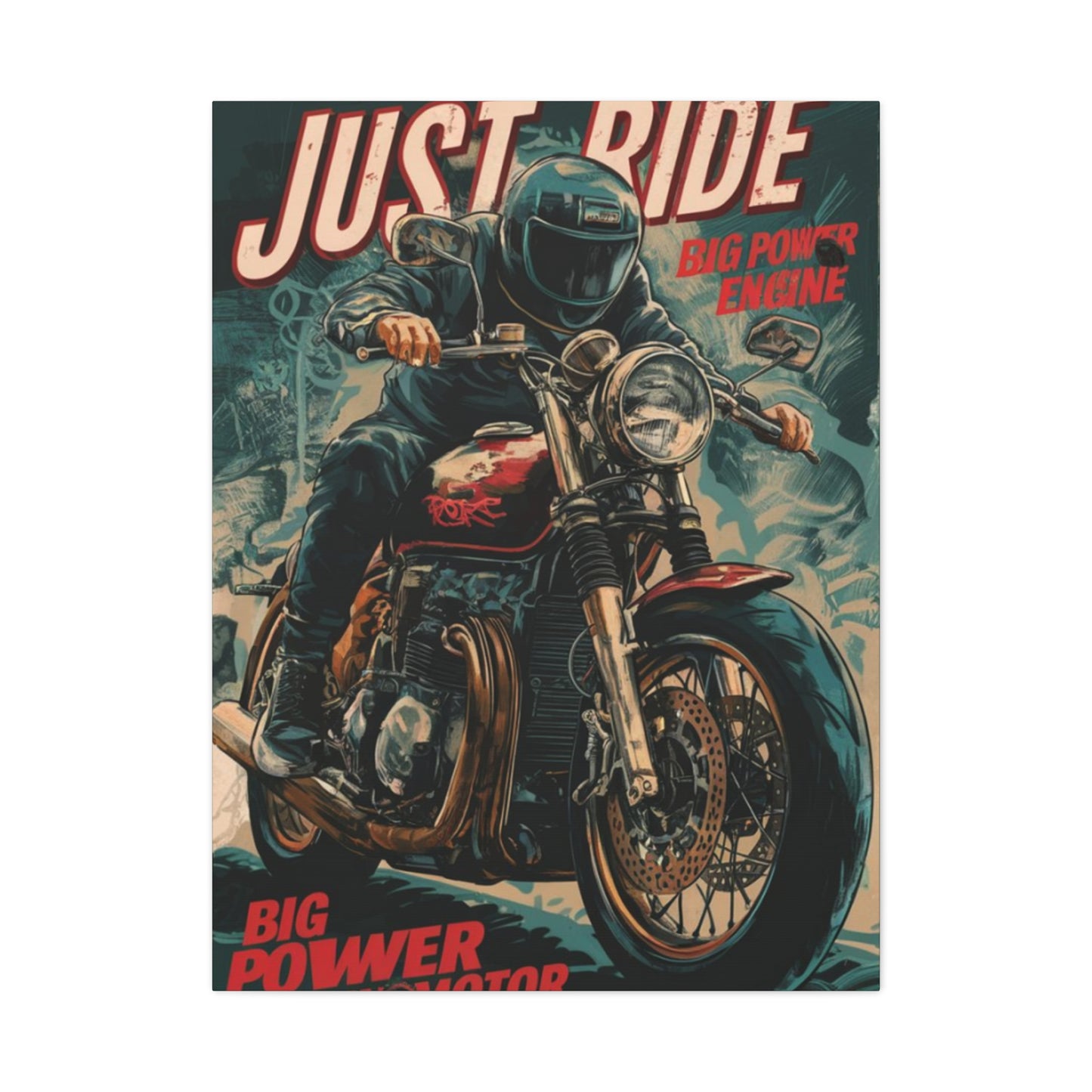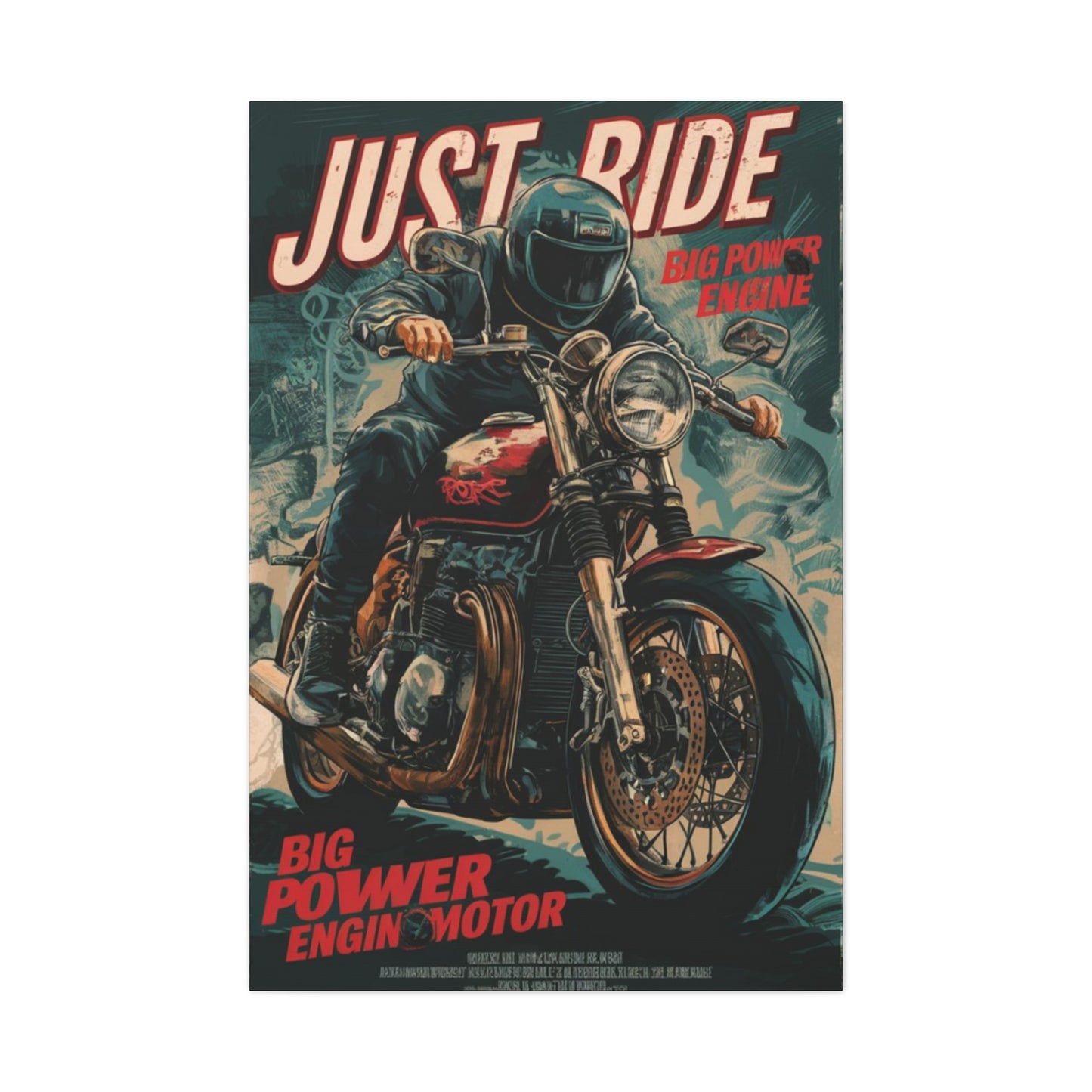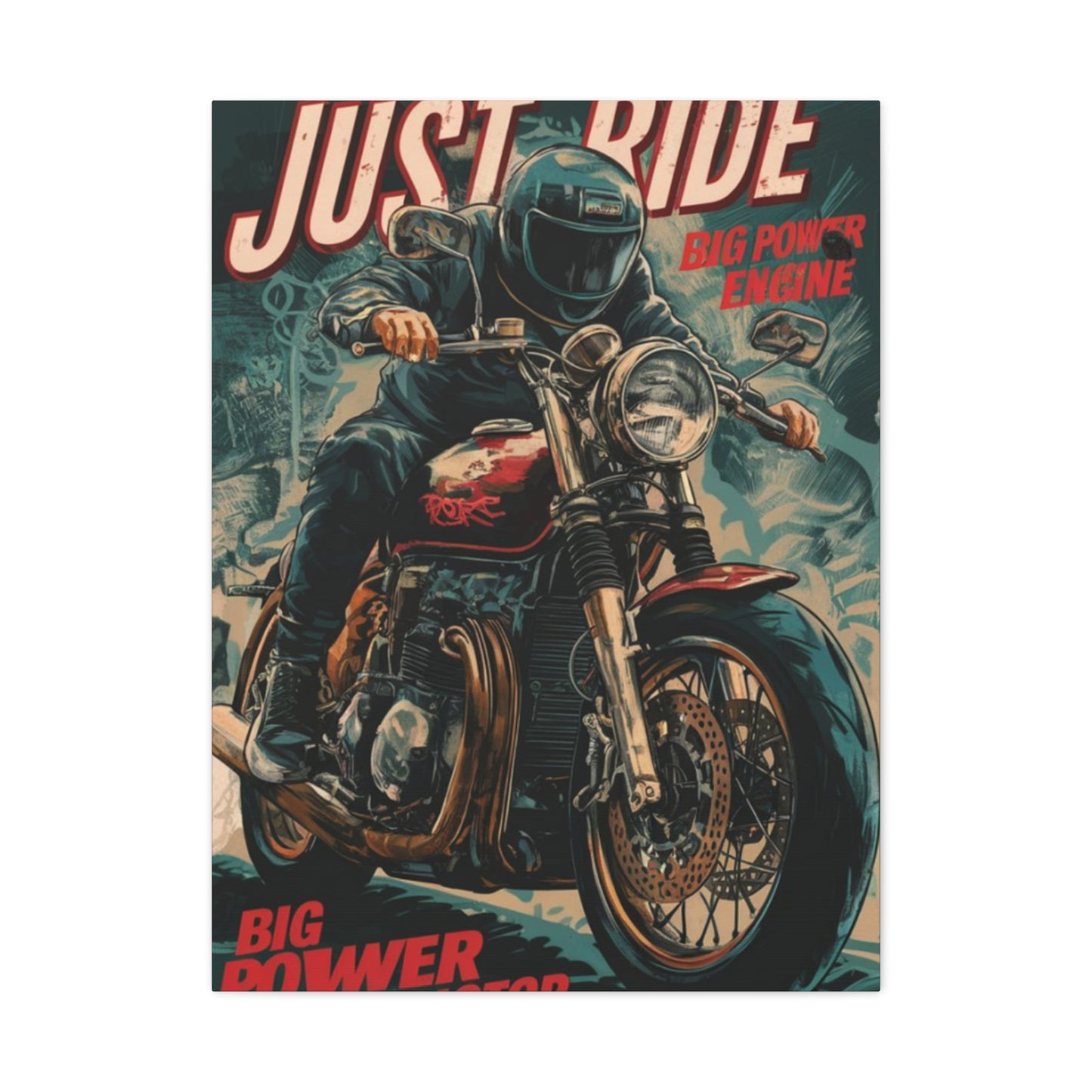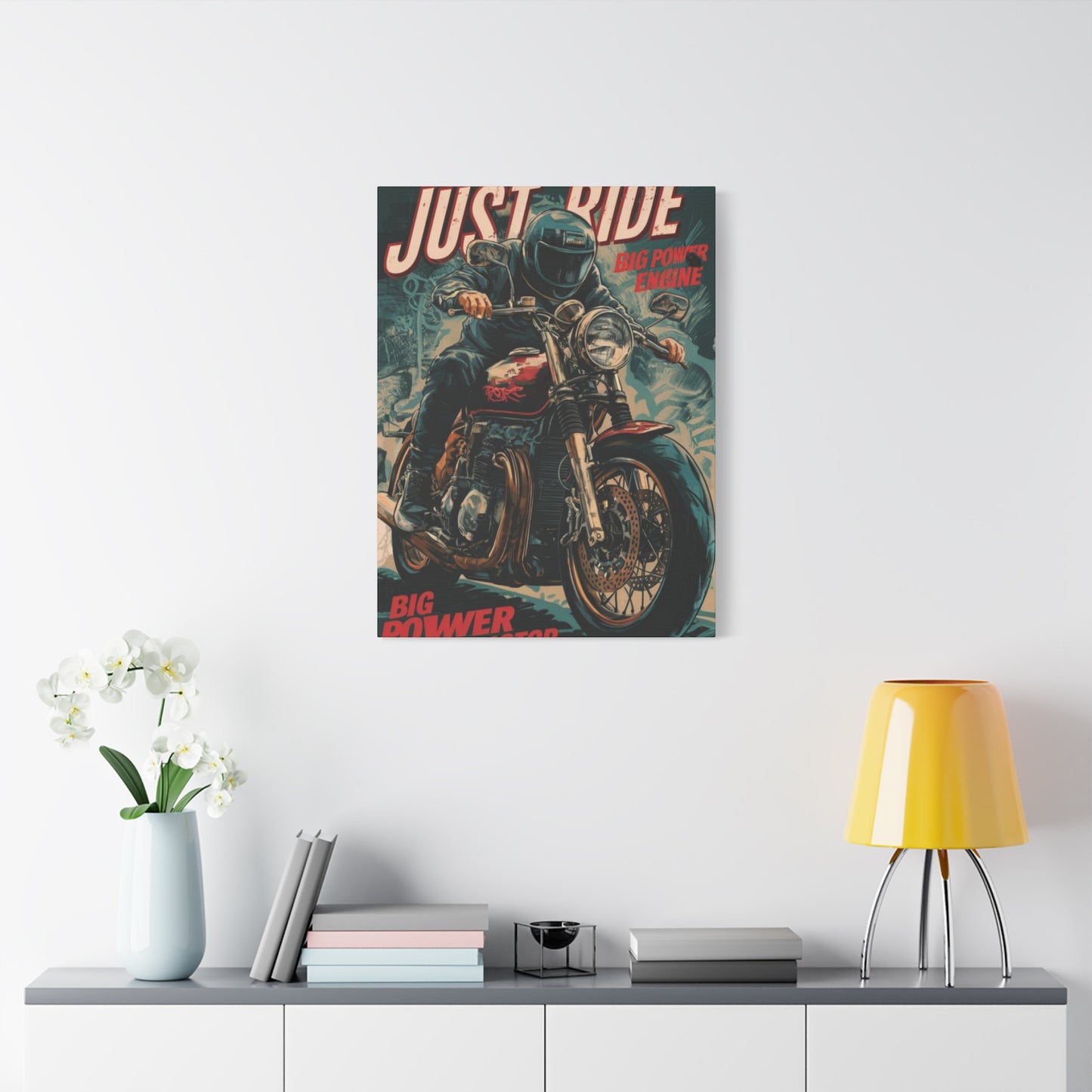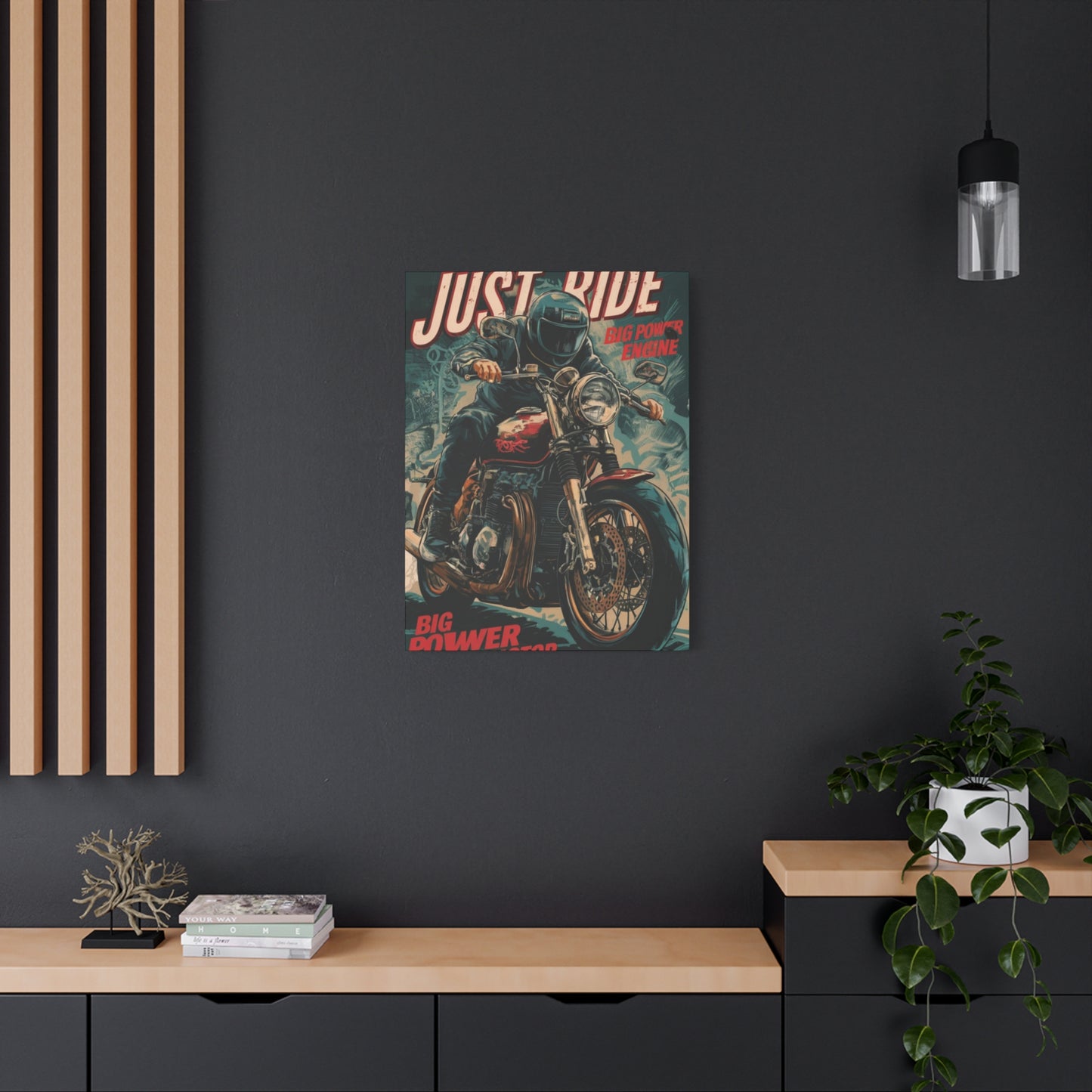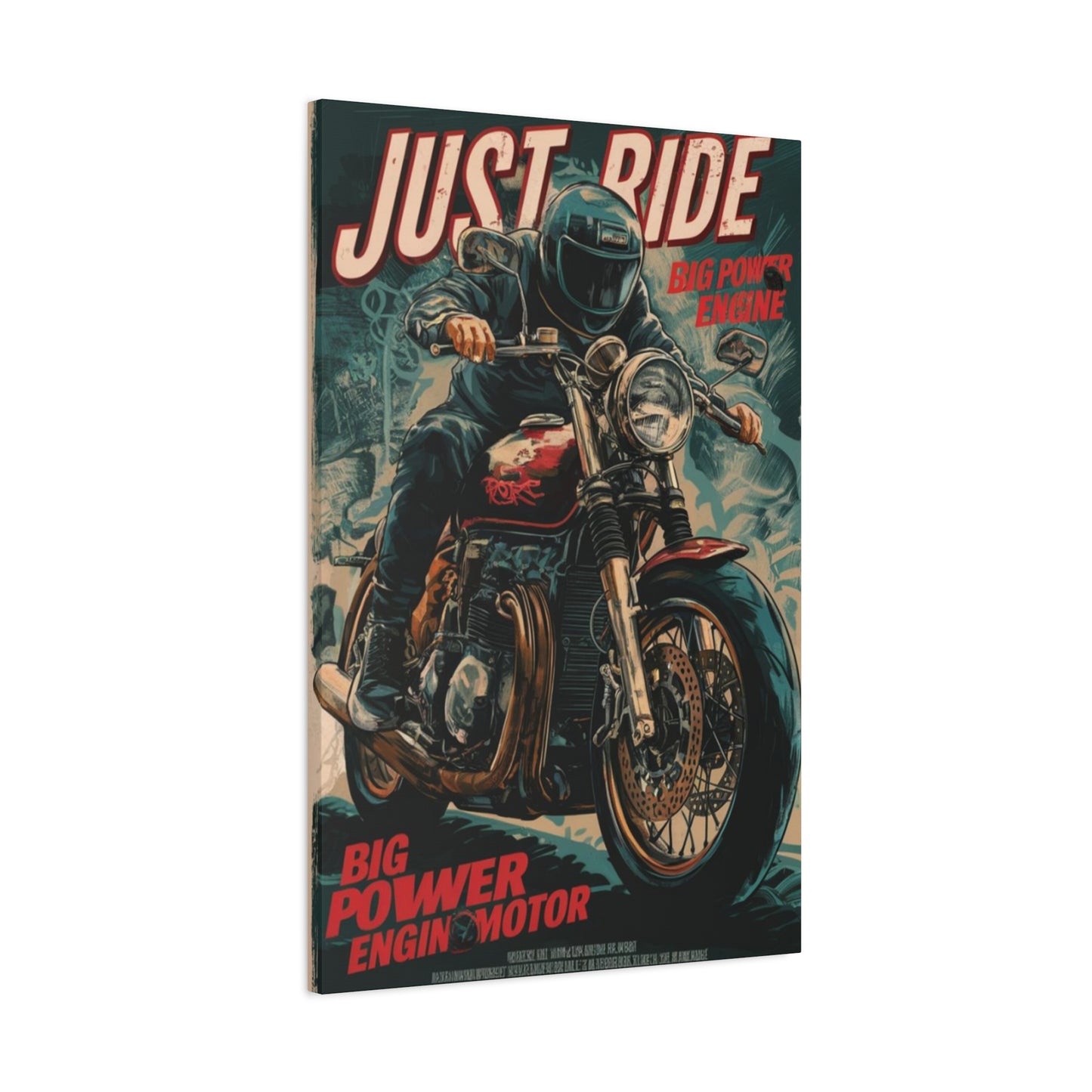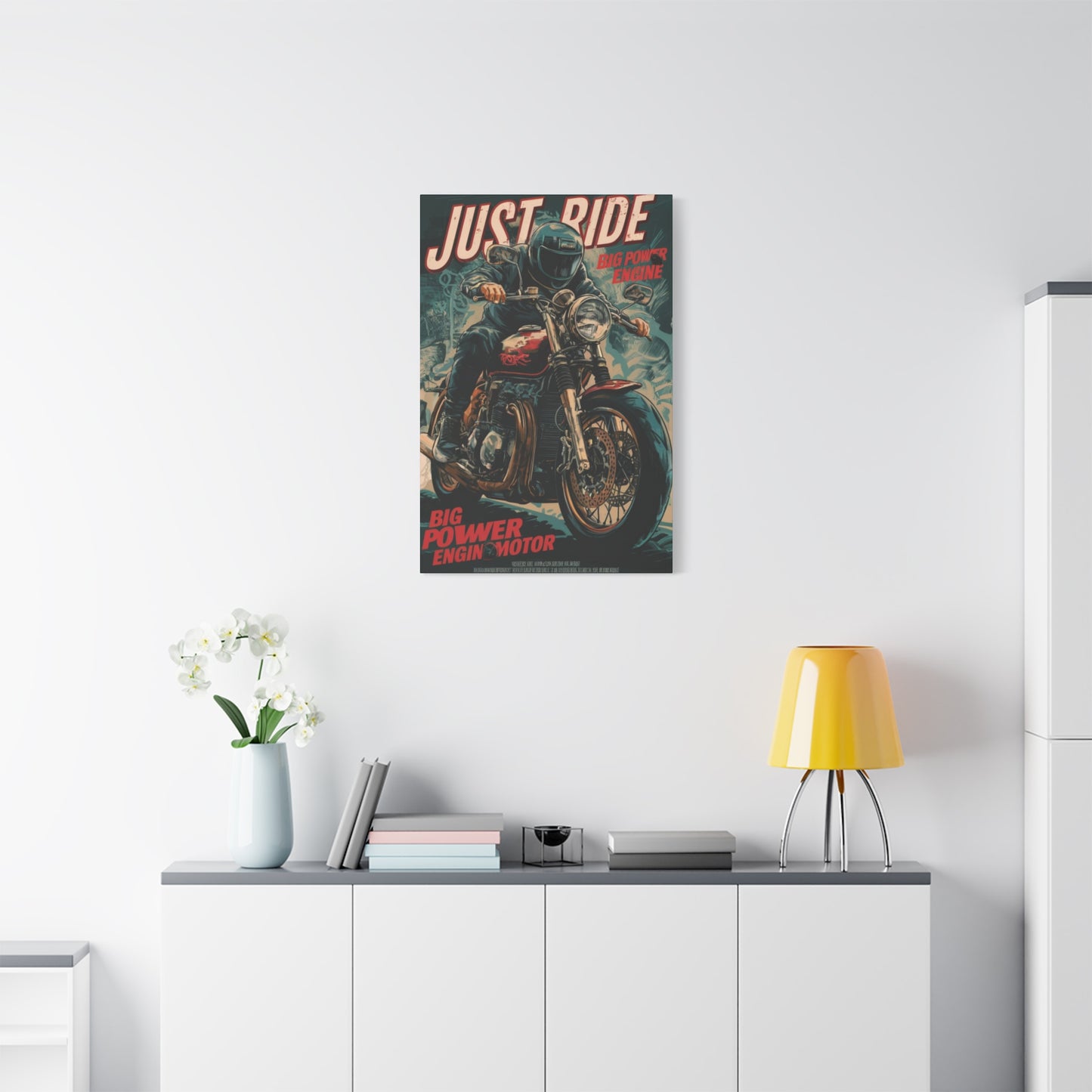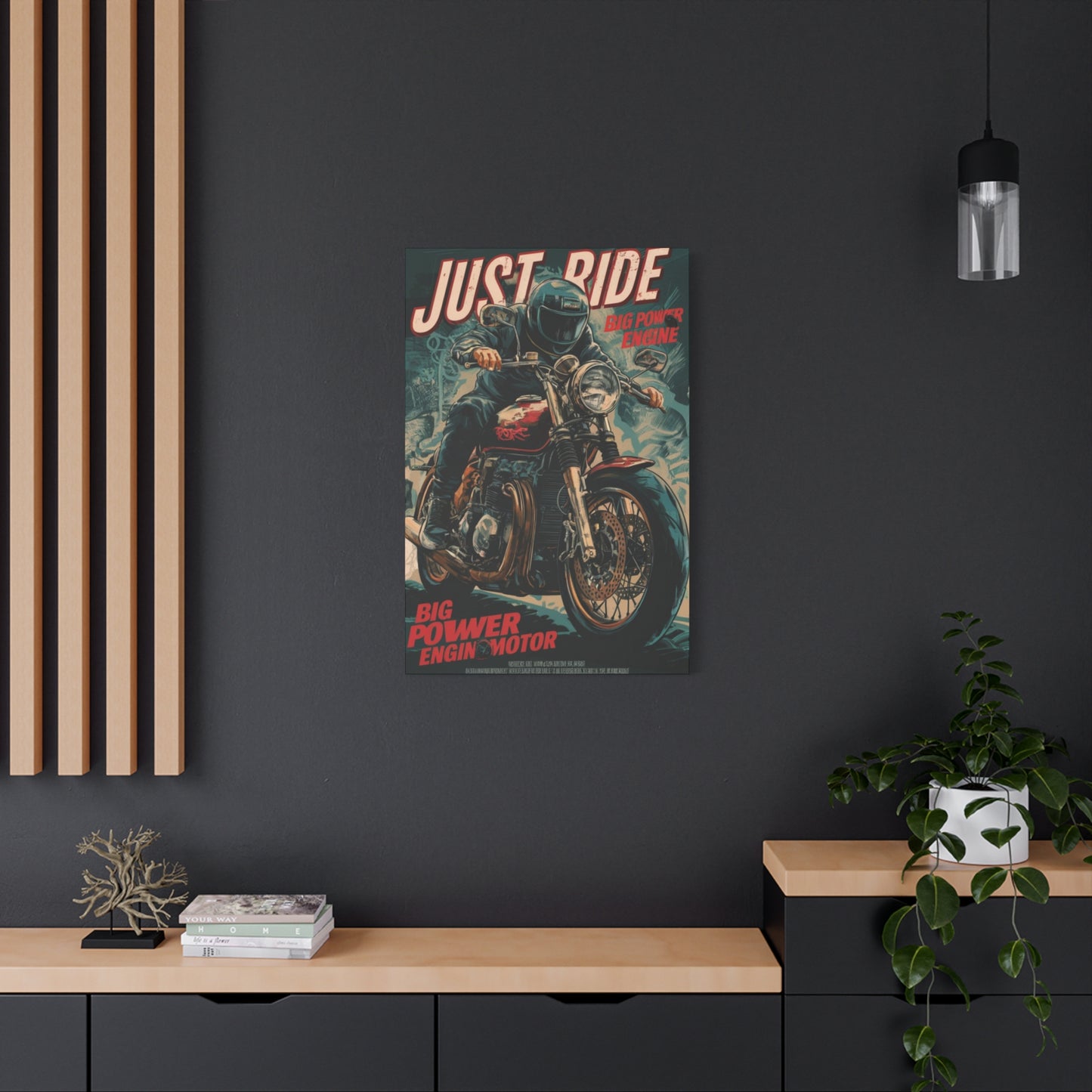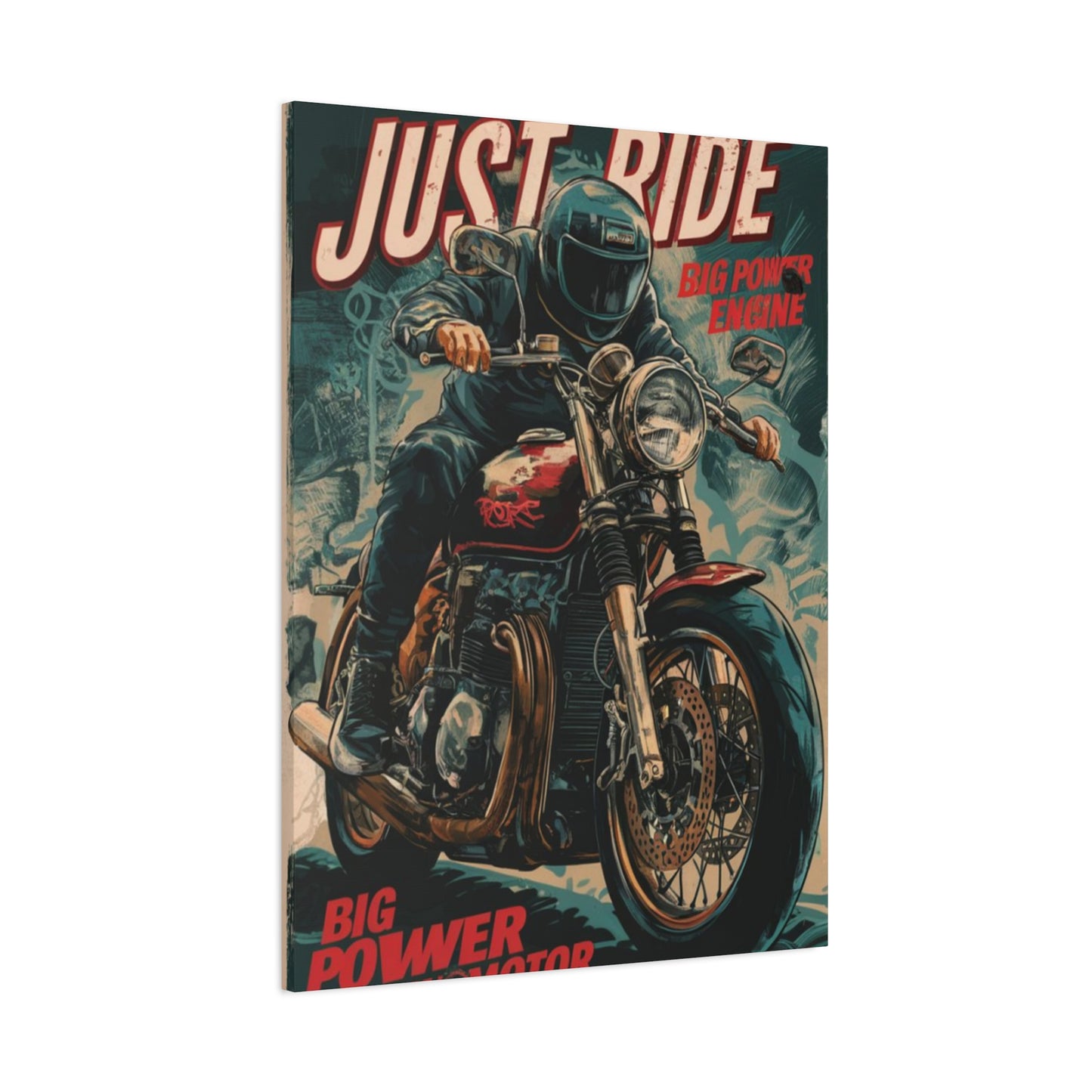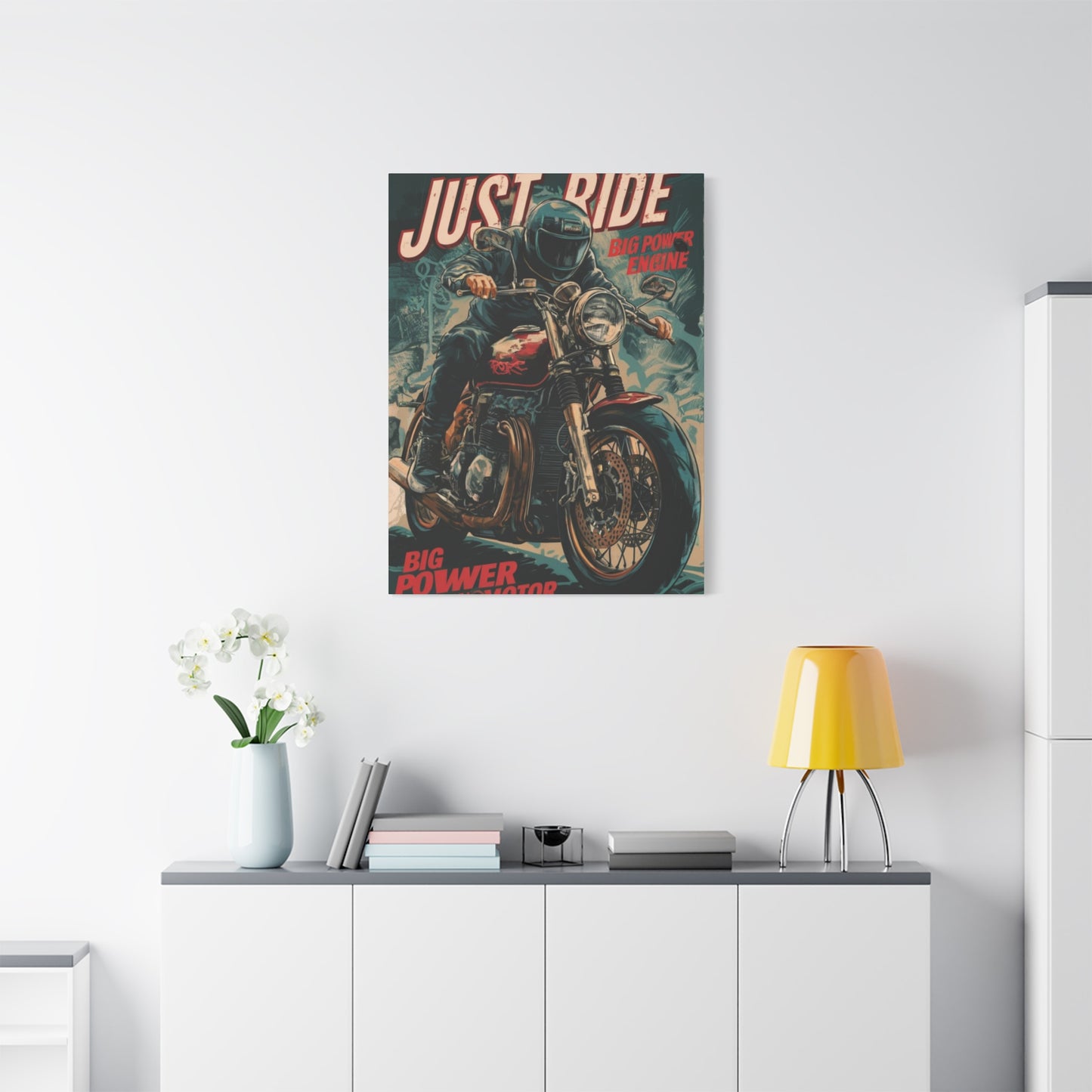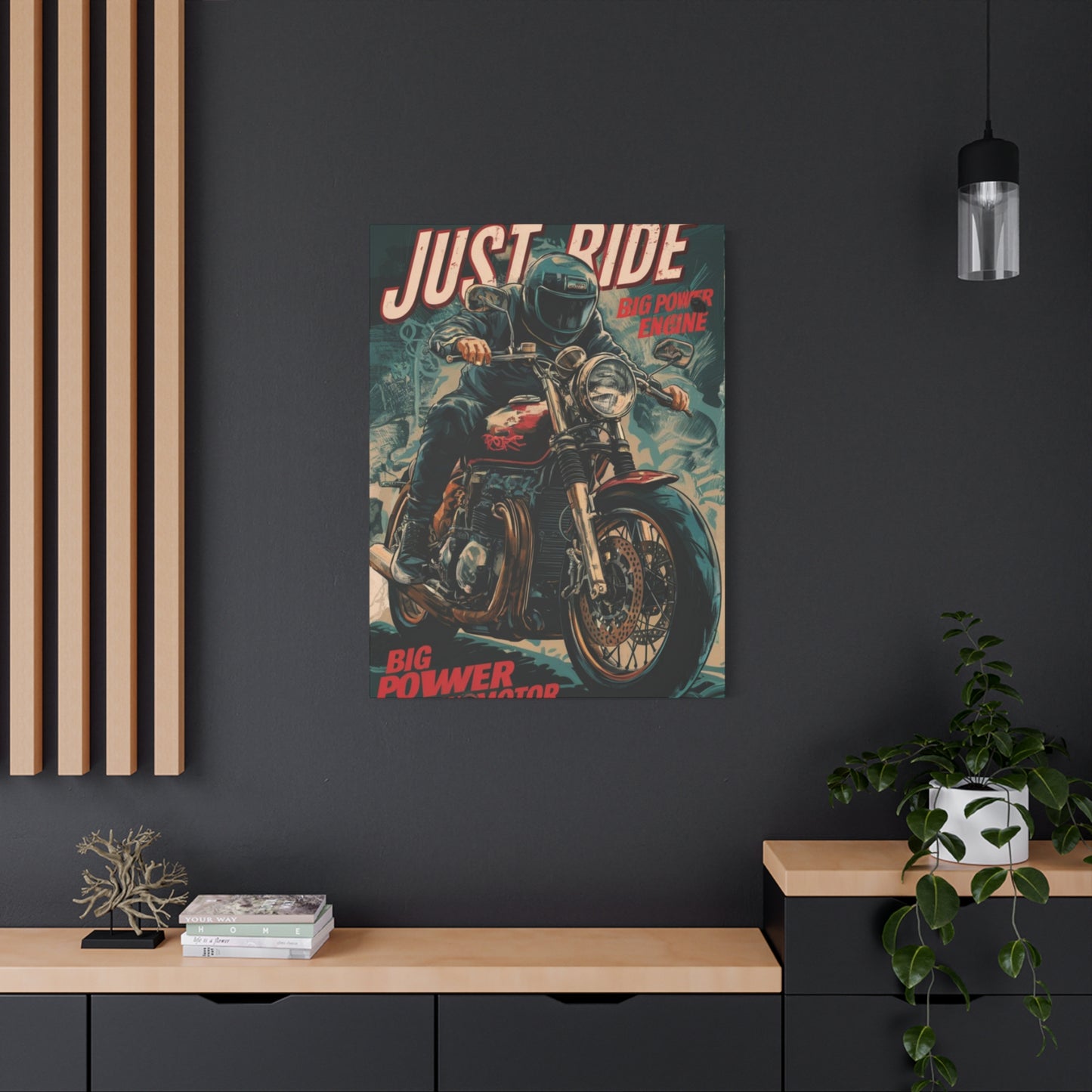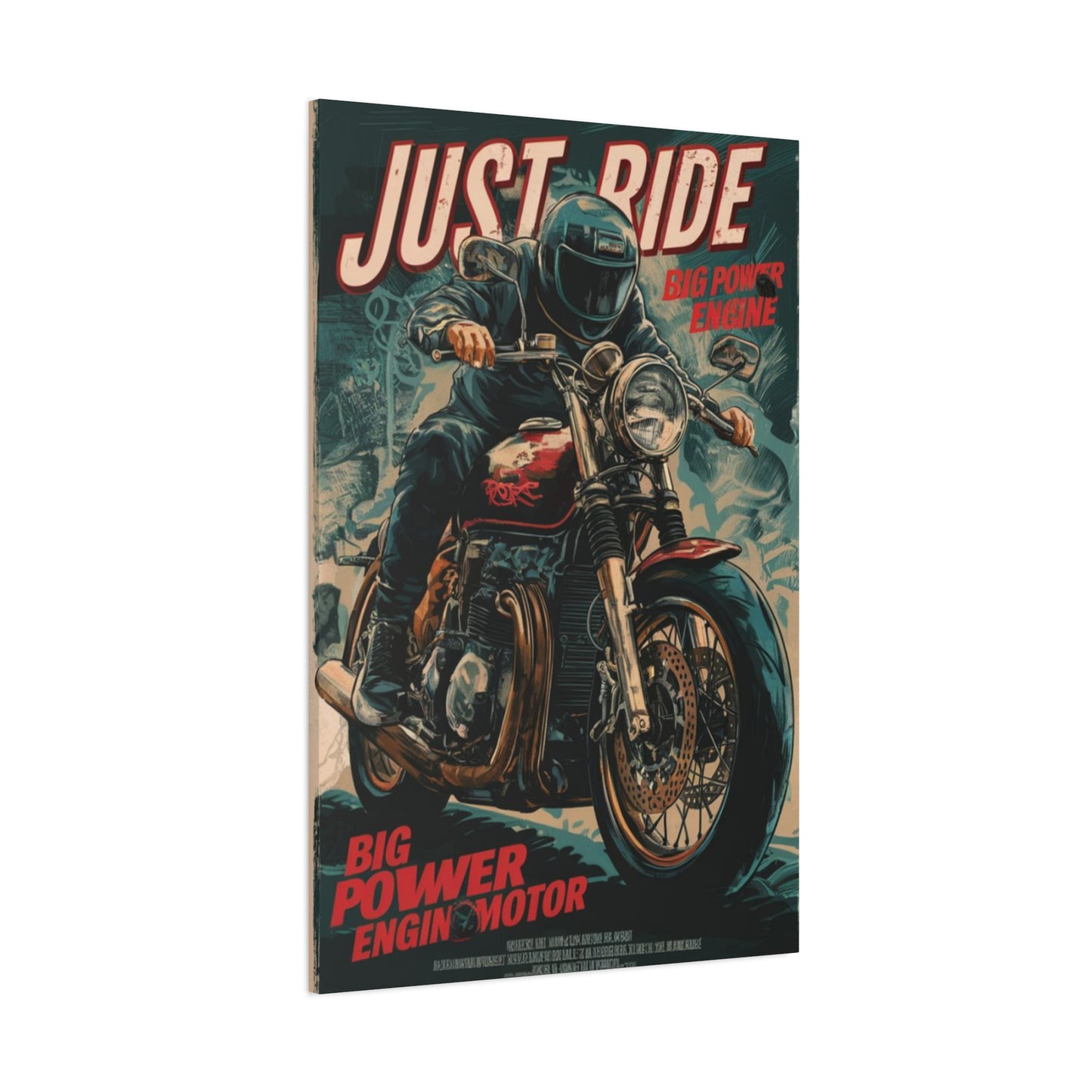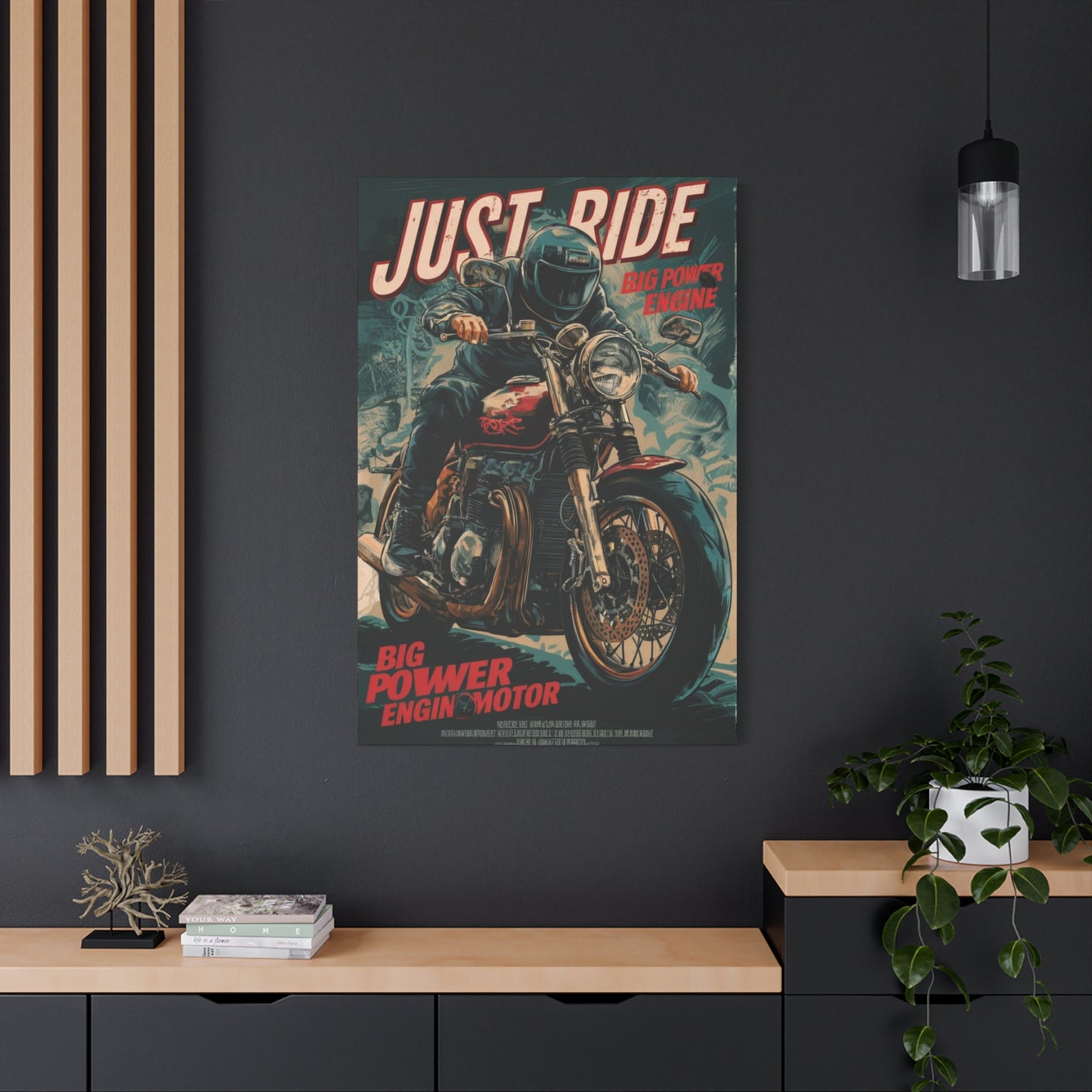Motorcycle Wall Art: Capturing the Raw Energy of Two-Wheeled Adventure
The thunderous roar of engines, the gleam of chrome against asphalt, and the unmistakable silhouette of riders leaning into curves – these powerful images have captivated enthusiasts for decades. Motorcycle wall art represents more than mere decoration; it embodies a lifestyle, a philosophy, and an unquenchable thirst for freedom that resonates deeply within countless hearts worldwide. From vintage-inspired prints that harken back to the golden age of American motorcycling to contemporary digital masterpieces that capture the raw essence of speed and power, this visual medium has evolved into a sophisticated art form that speaks to both seasoned riders and admirers of mechanical beauty.
The cultural significance of two-wheeled transportation extends far beyond its practical applications, weaving itself into the fabric of rebellion, independence, and personal expression. Artists have long recognized this powerful symbolism, creating works that celebrate not just the machines themselves, but the spirit they represent. Whether displayed in residential settings, commercial establishments, or dedicated enthusiast gatherings, these artistic representations serve as constant reminders of adventure, courage, and the relentless pursuit of horizons yet unexplored.
Dynamic Motorcycle Riding Scenes That Electrify Your Environment
The most captivating motorcycle wall art pieces are those that successfully capture motion within stillness. Dynamic riding scenes represent the pinnacle of this artistic challenge, requiring creators to freeze moments of intense action while maintaining the viewer's sense of movement and energy. These compositions typically feature riders in various stages of their journey – perhaps navigating serpentine mountain passes, racing across desert highways, or carving through urban landscapes with precision and grace.
Artists employ numerous techniques to achieve this sense of dynamism. Motion blur effects suggest speed without sacrificing clarity of the central subject, while dramatic angles and perspectives create visual tension that draws viewers into the scene. The positioning of the rider, the lean of the machine, and even the direction of flying debris or dust clouds all contribute to the overall impression of movement and excitement.
Color palettes in dynamic riding scenes often reflect the emotional intensity of the moment being depicted. Warm oranges and reds might dominate sunset highway scenes, suggesting both the beauty of the journey and the passion driving the rider forward. Cool blues and grays could characterize early morning rides through misty mountain terrain, evoking feelings of solitude and contemplation that many motorcyclists treasure.
The technical aspects of the motorcycles themselves receive careful attention in these dynamic compositions. Chrome reflections catch light in ways that suggest movement, while tire treads and exhaust systems are rendered with precision that speaks to the mechanical appreciation inherent in motorcycling culture. These details serve not merely as artistic flourishes but as authentic elements that resonate with viewers who understand and appreciate the engineering marvels they represent.
Background elements in dynamic riding scenes play crucial supporting roles, providing context and enhancing the overall narrative. Highway guardrails streak past in blurred lines, mountain peaks frame dramatic curves, and city lights create bokeh effects that suggest speed and urban energy. These environmental elements work in harmony with the primary subjects to create comprehensive visual stories that transport viewers directly into the experience.
Lighting plays a particularly important role in dynamic motorcycle scenes, with artists often employing dramatic contrasts between light and shadow to enhance the sense of movement and drama. Golden hour lighting creates long shadows and warm glows that suggest both beauty and urgency, while stark artificial lighting might emphasize the raw power and mechanical precision of high-performance machines navigating challenging conditions.
The emotional resonance of dynamic riding scenes extends beyond mere aesthetic appreciation. For many viewers, these images trigger powerful memories of their own riding experiences or inspire dreams of adventures yet to come. The art becomes a catalyst for emotional connection, transforming ordinary wall coverings into windows to worlds of excitement and possibility.
Professional artists working in this genre often spend considerable time studying actual riding conditions and motorcycle behavior to ensure authenticity in their work. This dedication to realism enhances the credibility of their artistic interpretations while maintaining the respect of knowledgeable enthusiasts who can immediately recognize accurate versus idealized representations of motorcycling experiences.
Classic Biker Culture Portrayed Through Timeless Poster Designs
The roots of biker culture run deep through American history, intertwining with themes of rebellion, brotherhood, and the pursuit of authentic experiences in an increasingly mechanized world. Classic biker culture posters capture these themes through iconic imagery that has remained virtually unchanged for decades, speaking to the timeless appeal of certain aesthetic and philosophical elements that define this unique subculture.
Traditional biker imagery draws heavily from post-war American symbolism, incorporating elements such as eagles, flags, skulls, and flames into compositions that celebrate both patriotism and individualism. These symbolic elements carry deep meaning within the community, representing values such as honor, freedom, mortality awareness, and the transformative power of passionate pursuit. Artists working within this tradition understand the importance of these symbols and employ them with respect for their cultural significance.
Typography plays a crucial role in classic biker poster design, with bold, aggressive fonts that mirror the powerful nature of the machines and the confident attitudes of their riders. Hand-lettered elements often appear alongside more formal typefaces, creating visual hierarchy while maintaining the authentic, grassroots feel that characterizes much of traditional biker culture. These typographic choices contribute significantly to the overall impact and authenticity of the finished pieces.
Color schemes in classic biker posters tend toward earth tones and metallic accents that reflect both the natural environments where many riders find solace and the mechanical elements that define their passion. Deep browns and rusts suggest weathered leather and aged metal, while bright chrome and steel accents add elements of precision and pride in mechanical excellence. Black often dominates these compositions, serving both practical and symbolic purposes by emphasizing other colors while representing the serious, no-nonsense attitude associated with authentic biker culture.
The portrayal of motorcycles in classic poster designs emphasizes certain archetypal machine characteristics that have become synonymous with American motorcycling. Extended front forks, prominent exhaust systems, and elaborate paint schemes receive particular attention, as these elements represent personal expression and mechanical mastery within the community. Artists often exaggerate these features slightly to enhance their visual impact while maintaining recognizable proportions and realistic mechanical relationships.
Backgrounds in classic biker posters frequently feature iconic American landscapes – endless highways stretching toward distant horizons, desert mesas silhouetted against dramatic skies, or small towns that represent stops along longer journeys. These environmental elements reinforce themes of exploration and adventure while grounding the imagery in recognizable American contexts that resonate with both participants and admirers of biker culture.
The human element in classic biker poster design often emphasizes archetypal figures rather than specific individuals. Leather-clad riders with flowing hair and confident postures represent the idealized version of freedom and self-determination that attracts many people to motorcycling. These figures serve as aspirational symbols rather than realistic portraits, allowing viewers to project themselves into the roles being depicted.
Artistic techniques in classic biker poster design often incorporate elements borrowed from vintage advertising and propaganda posters, creating visual connections to earlier eras of American graphic design. Bold outlines, simplified color palettes, and dramatic compositions echo the aesthetic approaches that proved effective in earlier decades, while contemporary printing technologies allow for enhanced detail and color accuracy that surpasses what was previously possible.
The commercial applications of classic biker poster designs extend far beyond simple wall decoration, appearing on everything from clothing and accessories to vehicle graphics and business signage. This widespread adoption speaks to the enduring appeal of these aesthetic approaches and their effectiveness in communicating cultural values and group identity across various contexts and applications.
Freedom and Speed: Artistic Interpretations of Liberation Through Motion
The concept of freedom holds profound significance within motorcycling culture, representing liberation from societal constraints, geographical limitations, and personal inhibitions. Artists attempting to capture this abstract concept through visual means face the challenge of translating intangible feelings into concrete images that resonate with viewers who may or may not share direct experience with motorcycling lifestyle.
Speed serves as both literal and metaphorical element in freedom-themed motorcycle art, representing not merely rapid movement through physical environments but also the psychological sensation of escaping limitations and embracing possibility. Artists employ various visual techniques to suggest speed while maintaining compositional balance and aesthetic appeal. Streaking backgrounds, blurred peripheral elements, and dynamic poses all contribute to the impression of rapid movement without sacrificing clarity of primary subjects.
The relationship between rider and machine receives particular attention in freedom-themed compositions, with artists often emphasizing the harmony and unity between human and mechanical elements. This symbiotic relationship represents a key aspect of the freedom experienced by motorcyclists – the sensation of extending human capabilities through mechanical partnership rather than simply operating a transportation device. Visual techniques that blur the boundaries between rider and motorcycle help communicate this concept effectively.
Environmental elements in freedom and speed artwork often emphasize vast, open landscapes that suggest unlimited possibility and unrestricted movement. Desert highways stretching to infinity, mountain passes revealing distant vistas, and coastal roads hugging dramatic shorelines all serve as backdrops that reinforce themes of exploration and adventure. These landscapes become characters in their own right, representing the destinations and experiences that motivate many motorcyclists' journeys.
Color psychology plays a crucial role in freedom-themed motorcycle art, with artists carefully selecting palettes that evoke specific emotional responses. Bright, saturated colors might suggest exhilaration and joy, while cooler tones could emphasize solitude and contemplation. The interplay between warm and cool colors can create visual tension that mirrors the complex emotions associated with solo travel and personal exploration.
Lighting effects in speed and freedom artwork often emphasize dramatic contrasts that enhance the sense of movement and energy. Golden hour photography techniques translate well to painted and digital media, creating warm glows that suggest both beauty and urgency. Harsh shadows and bright highlights can emphasize the sculptural qualities of motorcycles while creating visual rhythm that suggests motion even in static images.
The temporal aspect of freedom and speed artwork presents interesting artistic challenges, as creators must suggest not just a single moment but the ongoing nature of journey and exploration. Some artists address this through sequential imagery or multiple exposure effects that show progression through time and location. Others focus on capturing pivotal moments that represent broader themes of transition and transformation.
Abstract elements increasingly appear in contemporary freedom and speed motorcycle art, as artists explore non-representational approaches to communicating these powerful concepts. Gestural brushwork, dynamic color relationships, and simplified forms can sometimes convey the essence of motorcycling freedom more effectively than literal representations, appealing to viewers' emotional responses rather than their analytical processes.
The philosophical dimensions of freedom and speed in motorcycle culture extend beyond simple recreation, touching on fundamental questions about authenticity, self-determination, and the relationship between humans and technology. Thoughtful artists working in this genre often incorporate subtle references to these deeper themes, creating works that reward careful consideration while remaining accessible to casual viewers.
Vintage Motorcycle Poster Aesthetics That Define Classic Style
Vintage motorcycle poster design represents a distinct aesthetic category that draws inspiration from multiple decades of graphic design evolution while maintaining consistent thematic elements that define its unique character. This artistic approach combines nostalgic elements with contemporary production techniques, creating works that appeal to both historical appreciation and modern decorative sensibilities.
The golden age of motorcycle poster design, spanning roughly from the 1940s through the 1970s, established visual conventions that continue to influence contemporary artists working within this tradition. Bold, simplified forms, limited color palettes, and strong typographic elements characterize this aesthetic approach, reflecting both the printing limitations of earlier eras and the cultural values that shaped visual communication during those decades.
Typography in vintage motorcycle poster design draws heavily from mid-century advertising and industrial design traditions. Sans-serif fonts with strong geometric characteristics often dominate these compositions, conveying reliability and modernity while remaining highly legible at various sizes and distances. Hand-lettered elements add personal touches that humanize otherwise mechanical compositions, creating visual variety while maintaining overall stylistic coherence.
Color palettes in vintage motorcycle poster design typically employ earth tones and muted primaries that suggest both authenticity and timelessness. These color choices reflect practical considerations from earlier printing processes while creating aesthetic associations with craftsmanship and durability. The deliberate restraint in color usage often enhances the impact of accent colors when they appear, creating focal points that draw attention to key elements within compositions.
The portrayal of motorcycles in vintage poster design emphasizes classic American and European models that have achieved iconic status within enthusiast communities. Harley-Davidson, Indian, Triumph, and other legendary manufacturers receive particular attention, with artists focusing on the distinctive design elements that make these machines immediately recognizable. Chrome details, distinctive fuel tank shapes, and characteristic exhaust configurations receive careful rendering that celebrates their aesthetic and functional significance.
Background elements in vintage motorcycle poster design often feature simplified landscape elements that suggest adventure and exploration without overwhelming the primary subjects. Stylized mountains, highways, and architectural elements provide context while maintaining the clean, uncluttered aesthetic that characterizes this artistic approach. These background elements often employ perspective and scale relationships that enhance the heroic quality of the featured motorcycles and riders.
Artistic techniques in vintage motorcycle poster design frequently incorporate elements borrowed from commercial art traditions, including illustration methods developed for advertising and promotional materials. Airbrushing effects, precise mechanical rendering, and careful attention to lighting and shadow all contribute to the polished, professional appearance that defines high-quality vintage-style poster design.
The revival of vintage motorcycle poster aesthetics in contemporary art reflects broader cultural trends toward nostalgia and authenticity in an increasingly digital world. Modern artists working within this tradition often combine traditional visual elements with contemporary subject matter, creating works that bridge historical appreciation and current relevance while maintaining stylistic consistency with classic examples.
Production techniques for vintage-style motorcycle posters have evolved significantly with advances in digital printing and color management, allowing contemporary artists to achieve effects that surpass what was possible during the original vintage era. However, many artists deliberately limit their technical approaches to maintain authenticity with historical examples, creating works that could conceivably have been produced during the periods they reference.
The collecting and appreciation of both authentic vintage motorcycle posters and contemporary works created within this tradition has developed into a sophisticated market, with certain artists and particular examples commanding significant prices among enthusiasts and collectors. This commercial interest has encouraged both preservation of historical examples and continued innovation within the established aesthetic framework.
Powerful Rider Silhouettes That Command Attention in Visual Art
The human silhouette represents one of the most recognizable and emotionally resonant elements in visual art, carrying immediate communicative power that transcends cultural and linguistic barriers. In motorcycle-themed artwork, rider silhouettes serve multiple artistic and symbolic functions, providing focal points that embody the human element of motorcycling while maintaining universal appeal that speaks to viewers regardless of their personal experience with two-wheeled transportation.
Silhouette artwork reduces complex human forms to their essential elements, eliminating distracting details while emphasizing posture, proportion, and gesture that communicate attitude and intention. Successful motorcycle rider silhouettes capture the distinctive postures associated with different riding styles – the forward lean of sport bike riders, the relaxed positioning of cruiser enthusiasts, or the upright stance of adventure touring participants. These postural differences immediately communicate information about riding style and motorcycle type to knowledgeable viewers.
The relationship between rider and machine silhouettes requires careful artistic consideration to maintain proper proportional relationships while emphasizing the unity between human and mechanical elements. Overlapping forms can suggest integration and harmony, while separated silhouettes might emphasize individual elements within the overall composition. The degree of overlap and the specific areas where rider and motorcycle silhouettes intersect can significantly impact the emotional and aesthetic impression of finished pieces.
Lighting plays a crucial role in effective silhouette artwork, with artists often employing dramatic backlighting effects that create clear separation between subject and background while maintaining readable form definition. Rim lighting techniques can add dimensional quality to otherwise flat silhouettes, suggesting form and volume while preserving the simplified aesthetic that defines this artistic approach. The color and intensity of backlighting can dramatically affect the mood and emotional impact of silhouette compositions.
Background elements in rider silhouette artwork must balance several competing demands – providing sufficient contrast to ensure silhouette readability while contributing to the overall narrative and aesthetic impact of the piece. Gradient backgrounds, dramatic skies, and simplified landscape elements often serve these functions effectively, creating visual interest without overwhelming the primary subjects. The transition between background and silhouette edges requires particular attention to maintain clean, readable forms.
Dynamic silhouettes present additional artistic challenges, as creators must suggest movement and energy while working within the constraints of simplified form representation. Action poses, flowing clothing or hair, and tilted motorcycles all contribute to the impression of motion within static imagery. The selection and emphasis of specific anatomical and mechanical elements can significantly enhance the sense of dynamism in silhouette artwork.
Group silhouette compositions add complexity while potentially increasing narrative impact, showing multiple riders in formation or depicting scenes of community and shared experience that represent important aspects of motorcycling culture. The spacing, overlap, and relative positioning of multiple silhouettes require careful consideration to maintain individual readability while creating cohesive overall compositions that serve the intended artistic and communicative purposes.
The symbolic power of rider silhouettes extends beyond mere representation, often serving as archetypal figures that embody broader themes of adventure, independence, and personal transformation. These symbolic associations allow silhouette artwork to communicate complex ideas and emotions through relatively simple visual means, making them effective choices for both decorative and conceptual artistic applications.
Contemporary digital tools have expanded the possibilities for creating and manipulating rider silhouettes, allowing artists to combine photographic source material with painted and illustrated elements while maintaining the simplified aesthetic that defines this approach. However, traditional techniques remain relevant and often preferred by artists seeking to maintain authentic connections to historical silhouette art traditions.
Just Rider: Embodying the Pure Spirit of Open Road Adventure
The concept of "Just Rider" represents a philosophical approach to motorcycling that emphasizes the pure, unadulterated experience of travel and exploration over material considerations or social status indicators. This mindset resonates deeply within authentic motorcycling culture, celebrating the transformative power of journey over destination while honoring the meditative and spiritual aspects of solo travel that many riders discover through their experiences.
Artistic interpretations of the "Just Rider" concept often focus on solitary figures navigating vast landscapes, emphasizing the individual's relationship with environment and machine rather than social interactions or community aspects of motorcycling culture. These compositions typically feature lone riders on empty highways, mountain passes, or desert roads, suggesting both physical and psychological journeys that extend beyond simple transportation from one location to another.
The minimalist aesthetic often associated with "Just Rider" artwork reflects the philosophical emphasis on essential elements over superficial decorations or complications. Clean lines, simplified color palettes, and uncluttered compositions mirror the mindset of riders who prioritize authentic experience over material accumulation or social performance. This artistic restraint can create powerful emotional impact through careful selection and emphasis of key visual elements.
Motorcycles featured in "Just Rider" artwork often emphasize functional rather than decorative elements, celebrating the mechanical honesty and purposeful design that enable reliable long-distance travel. Practical features such as luggage systems, protective equipment, and weathered surfaces receive attention as evidence of authentic use rather than showroom display. These details resonate with viewers who appreciate the practical aspects of motorcycle travel and adventure.
Environmental elements in "Just Rider" compositions frequently emphasize the natural world and remote locations that represent escape from urban complexity and social pressures. Mountain ranges, desert landscapes, coastal highways, and rural farmland all serve as backdrops that reinforce themes of exploration and connection with the natural world. Weather conditions and seasonal variations add temporal elements that suggest ongoing journey rather than single moments in time.
The temporal aspect of "Just Rider" artwork often suggests continuation beyond the boundaries of individual pieces, implying that the depicted journey extends before and after the captured moment. This sense of ongoing adventure appeals to viewers who understand that true motorcycle travel involves not just individual trips but lifestyle choices that prioritize exploration and authentic experience over conventional measures of success or security.
Lighting in "Just Rider" artwork frequently emphasizes natural conditions rather than artificial or dramatic effects, celebrating the honest beauty of actual travel conditions over idealized fantasy scenarios. Golden hour lighting, overcast skies, and harsh midday sun all appear in works that honor the reality of motorcycle travel while maintaining aesthetic appeal and emotional resonance.
The emotional content of "Just Rider" artwork often explores themes of solitude, contemplation, and personal discovery that many motorcyclists experience during extended solo travel. These introspective elements add depth and complexity to works that might otherwise be dismissed as simple transportation imagery, appealing to viewers who appreciate the psychological and spiritual dimensions of motorcycle travel culture.
Color palettes in "Just Rider" artwork tend toward natural tones that reflect actual landscape conditions rather than artificially enhanced or dramatically altered color relationships. Earth tones, sky blues, and vegetation greens dominate these compositions, creating authentic environmental contexts while maintaining visual harmony and aesthetic appeal that serves both decorative and contemplative purposes.
Motorcycle Passion Expressed Through Bold and Dynamic Print Media
The intensity of motorcycle enthusiasm demands artistic expression that matches its emotional power, leading to the development of bold print media that captures both the mechanical beauty of the machines themselves and the passionate dedication of their human partners. This artistic category encompasses works that celebrate not just motorcycles as objects but motorcycling as a lifestyle choice that profoundly influences personal identity and worldview.
Bold color applications distinguish passionate motorcycle print media from more restrained artistic approaches, with artists employing saturated primaries and dramatic contrasts that mirror the intensity of emotion associated with deep mechanical appreciation. Vibrant reds suggest power and excitement, while electric blues might emphasize speed and precision. These color choices create immediate visual impact while communicating the emotional intensity that characterizes authentic motorcycle enthusiasm.
Dynamic composition techniques in passionate motorcycle prints often emphasize diagonal lines, dramatic angles, and asymmetrical arrangements that create visual tension and energy. These compositional approaches mirror the dynamic nature of motorcycle operation while creating artwork that demands attention and engagement from viewers. The placement of key elements within these compositions can guide viewers' eyes through intended reading patterns while maintaining overall balance and aesthetic appeal.
Typography in passionate motorcycle print media often employs aggressive, bold fonts that mirror the powerful nature of the machines being celebrated. Custom lettering and hand-drawn elements add personal touches that humanize otherwise mechanical subjects while maintaining the authentic, grassroots feeling that characterizes much of motorcycle culture. The integration of text and image elements requires careful consideration to maintain both readability and visual impact.
Mechanical details receive particular attention in passionate motorcycle prints, with artists often emphasizing the sculptural beauty and engineering precision of engines, frames, and suspension systems. Chrome reflections, polished aluminum surfaces, and intricate mechanical relationships all serve as subjects worthy of artistic celebration while appealing to viewers who appreciate the technical sophistication of modern motorcycle design and engineering.
Action elements frequently appear in passionate motorcycle print media, suggesting motion and energy even within static compositions. Flying debris, streaming exhaust, and dynamic poses all contribute to the impression of power and performance that defines high-quality motorcycle imagery. These elements must be rendered with attention to physical accuracy while maintaining artistic license that enhances rather than contradicts realistic mechanical behavior.
The human element in passionate motorcycle prints often emphasizes the emotional connection between rider and machine, showing figures that display confidence, concentration, and joy in their mechanical partnerships. Facial expressions, body language, and protective equipment all contribute to characterizations that resonate with viewers who share similar passions or aspire to develop comparable skills and relationships with their own machines.
Scale relationships in passionate motorcycle print media can vary dramatically depending on intended emphasis and artistic goals. Close-up details might fill entire compositions, celebrating the intricate beauty of mechanical elements, while wide-angle views could show motorcycles within dramatic environmental contexts that suggest adventure and exploration. The choice of scale significantly impacts the emotional and aesthetic impression of finished pieces.
Production techniques for passionate motorcycle print media have evolved with advances in digital printing technology, allowing artists to achieve color accuracy and detail resolution that surpasses what was possible with traditional offset printing methods. However, many artists continue to employ screen printing and other traditional techniques that create distinctive visual textures and authentic connections to historical poster and print traditions.
Edgy and Cool: Biker Wall Decor That Defines Attitude and Style
Contemporary biker wall decor has evolved beyond simple motorcycle imagery to encompass broader aesthetic categories that celebrate rebellion, individuality, and authentic self-expression. This artistic evolution reflects changes within motorcycle culture itself, as communities have diversified to include participants from various backgrounds while maintaining core values of independence and personal authenticity that continue to attract new enthusiasts.
Edge aesthetics in biker wall decor often incorporate elements borrowed from punk, metal, and alternative cultural movements, creating visual languages that speak to younger demographics while respecting traditional motorcycling values. Distressed textures, high contrast imagery, and unconventional color combinations all contribute to edgy aesthetic approaches that distinguish contemporary work from more traditional motorcycle artwork categories.
Cool factor in biker decor relates to perceived authenticity and insider knowledge, with successful pieces demonstrating understanding of subcultural values and aesthetic preferences that may not be immediately apparent to outsiders. References to specific motorcycle models, riding techniques, or cultural touchstones create connections with knowledgeable viewers while maintaining broader appeal through strong visual design and execution quality.
Urban influence increasingly appears in edgy biker wall decor, reflecting the reality that many contemporary motorcyclists live and ride in metropolitan environments rather than the rural settings traditionally associated with motorcycle culture. Graffiti-inspired elements, industrial textures, and architectural backgrounds all contribute to urban aesthetic approaches that acknowledge this demographic shift while maintaining authentic connections to core motorcycling values.
Mixed media approaches allow contemporary biker artists to combine traditional and digital techniques, creating works that reference historical precedents while employing contemporary tools and production methods. Photographic elements might be combined with painted or illustrated components, while digital manipulation can create effects that would be impossible through purely traditional means while maintaining handmade aesthetic qualities.
Subversive elements in edgy biker decor often challenge conventional expectations about motorcycle imagery, presenting familiar subjects through unexpected perspectives or artistic treatments. These approaches can create memorable impressions while appealing to viewers who appreciate artistic innovation and creative risk-taking over safe, predictable decorative choices.
The relationship between edgy biker decor and broader contemporary art movements creates opportunities for crossover appeal that extends beyond traditional motorcycle enthusiast markets. Elements borrowed from street art, pop art, and graphic design all appear in successful contemporary biker decor, creating works that function effectively in diverse environmental contexts while maintaining authentic connections to motorcycling culture.
Technical execution in edgy biker wall decor often emphasizes craftsmanship and attention to detail that demonstrates respect for both artistic tradition and subcultural values. Poor execution or obviously commercial production approaches can undermine the authenticity that defines successful edgy decor, making artistic skill and cultural knowledge equally important factors in creating effective contemporary biker artwork.
Color psychology plays important roles in edgy biker decor, with artists often employing palettes that suggest danger, excitement, or rebellion while maintaining aesthetic appeal and decorative functionality. The balance between provocative content and practical display considerations requires careful artistic judgment to create works that serve their intended purposes effectively.
Posters Designed Specifically for Motorcycle Enthusiast Communities
The creation of motorcycle enthusiast posters requires deep understanding of community values, aesthetic preferences, and cultural touchstones that resonate authentically with knowledgeable audiences. These specialized artworks serve multiple functions within enthusiast communities, providing decoration, identity reinforcement, and cultural communication while maintaining high standards of artistic quality and technical accuracy that sophisticated viewers demand.
Authenticity represents the primary consideration in enthusiast-oriented poster design, as community members quickly identify and reject works that demonstrate insufficient knowledge or respect for motorcycling culture. Accurate technical details, appropriate cultural references, and genuine appreciation for subject matter all contribute to authenticity that distinguishes quality enthusiast posters from generic motorcycle imagery created for broader markets.
Brand loyalty within motorcycle communities creates opportunities for specialized poster designs that celebrate specific manufacturers or model categories. Harley-Davidson, Ducati, BMW, and other legendary brands inspire devoted followings whose members appreciate artwork that honors their preferred machines while acknowledging the broader motorcycle community. These brand-specific approaches require careful balance between celebration and exclusivity to avoid alienating potential audiences.
Event commemoration represents another important category within enthusiast poster design, with artwork created to celebrate rallies, races, tours, and other gatherings that bring community members together. These pieces often incorporate specific dates, locations, and organizational elements while maintaining broader appeal that extends beyond immediate participants to include supporters and admirers of particular events or activities.
Technical accuracy in enthusiast posters extends beyond simple visual correctness to include understanding of mechanical relationships, performance characteristics, and operational details that informed viewers expect to see represented accurately. Engine configurations, suspension designs, and aerodynamic features all require careful research and authentic representation to maintain credibility with knowledgeable audiences.
Historical references frequently appear in enthusiast poster designs, acknowledging the rich heritage of motorcycle development and the legendary figures who shaped contemporary culture. Classic racing scenes, vintage advertising imagery, and iconic photographs all provide source material for contemporary interpretations that honor historical precedents while creating new artistic works for current audiences.
Community inside jokes and cultural references add layers of meaning that reward knowledgeable viewers while potentially excluding outsiders, creating the sense of shared knowledge and group membership that strengthens community bonds. These elements must be employed carefully to enhance rather than obscure the primary artistic and communicative functions of poster designs.
Quality expectations within enthusiast communities typically exceed those of general consumer markets, with community members appreciating superior materials, printing techniques, and finishing details that demonstrate respect for their investment and display preferences. Limited edition approaches and signed artist prints often command premium prices while providing exclusivity that appeals to serious collectors.
Distribution channels for enthusiast posters often bypass traditional retail outlets in favor of specialized dealerships, event vendors, and online communities that serve particular demographic segments. These alternative distribution methods allow artists to connect directly with target audiences while maintaining higher profit margins and greater creative control over their work.
Riding Into Adventure: Wall Art That Inspires Exploration and Journey
Adventure-themed motorcycle wall art serves as constant inspiration for viewers who dream of exploration and discovery, whether they currently participate in motorcycle travel or aspire to future adventures. This artistic category emphasizes the transformative power of journey while celebrating the mechanical capability that enables human exploration of remote and challenging environments.
Landscape integration plays crucial roles in adventure-themed motorcycle artwork, with environmental elements often receiving equal emphasis with human and mechanical subjects. Mountain ranges, desert vistas, coastal highways, and forest paths all serve as both artistic backdrops and symbolic representations of the diverse experiences available to adventurous motorcyclists willing to explore beyond familiar territories.
Geographic diversity in adventure artwork acknowledges that motorcycle exploration spans global environments and cultures, from Arctic expeditions to tropical touring adventures. This international scope creates opportunities for artistic works that celebrate cultural diversity while maintaining universal themes of exploration and discovery that transcend specific geographical boundaries or cultural contexts.
Equipment emphasis in adventure artwork often highlights the specialized gear and modifications that enable long-distance motorcycle travel in challenging conditions. Luggage systems, protective equipment, navigation tools, and survival gear all receive artistic attention as essential elements of serious adventure travel while adding authentic details that resonate with experienced adventure riders.
Weather conditions frequently appear as important elements in adventure-themed artwork, acknowledging that motorcycle travel exposes riders to natural conditions that automobile travelers typically avoid. Rain, snow, wind, and extreme temperatures all present challenges that adventure riders must overcome, creating opportunities for dramatic artistic interpretations that celebrate human resilience and determination.
The temporal aspect of adventure artwork often suggests extended journeys rather than brief recreational rides, emphasizing the commitment and preparation required for serious motorcycle exploration. Visual elements such as weathered equipment, varied terrain, and seasonal indicators all contribute to impressions of ongoing adventure rather than single-day experiences.
Solo travel themes appear frequently in adventure motorcycle artwork, reflecting the reality that many serious adventure riders prefer solitary exploration that allows for spontaneous decision-making and deeper connection with environments being explored. These solitary themes appeal to viewers who appreciate independence and self-reliance while acknowledging the contemplative aspects of extended motorcycle travel.
Cultural encounters often appear as secondary elements in adventure artwork, suggesting the human connections and learning opportunities that serious motorcycle travelers frequently experience. Local people, traditional architecture, and cultural landmarks all contribute to compositions that celebrate both natural exploration and human diversity encountered through adventure travel.
Navigation elements in adventure artwork might include maps, compasses, GPS devices, and other tools that enable successful exploration while symbolizing the planning and preparation that serious adventure travel requires. These technical elements add authenticity while appealing to viewers who appreciate the practical aspects of motorcycle adventure planning and execution.
Bold Colors and Sleek Design Elements in Contemporary Motorcycle Art
Contemporary motorcycle art increasingly employs sophisticated color theory and design principles that elevate the medium beyond simple representational imagery toward more complex artistic statements. This evolution reflects both advances in production technology and growing appreciation for motorcycles as legitimate subjects for serious artistic exploration rather than merely commercial or decorative applications.
Color psychology in contemporary motorcycle art recognizes that different hues create specific emotional responses that can enhance or contradict other artistic elements within compositions. Warm colors might emphasize power and excitement, while cool tones could suggest precision and technical sophistication. The strategic application of color theory principles allows artists to guide viewers' emotional responses while maintaining aesthetic appeal and decorative functionality.
Sleek design aesthetics in contemporary motorcycle art often borrow elements from industrial design, automotive styling, and contemporary architecture, creating visual languages that speak to audiences familiar with these related design disciplines. Clean lines, minimalist compositions, and sophisticated color relationships all contribute to refined aesthetic approaches that distinguish contemporary work from more traditional motorcycle imagery categories.
Digital production techniques enable color accuracy and consistency that surpasses what was previously possible through traditional printing methods, allowing contemporary artists to achieve precise color matching and gradient effects that enhance their artistic visions. However, many artists continue to employ traditional techniques that create distinctive visual textures and authentic connections to historical artistic traditions.
Gradient applications in contemporary motorcycle art can create dimensional effects that suggest form and volume while maintaining flat graphic design principles. These techniques allow artists to imply three-dimensional sculptural qualities within two-dimensional compositions, creating visual interest while avoiding the complexity of fully rendered realistic representations.
Metallic accent integration in contemporary motorcycle art acknowledges the prominent role of metal surfaces in motorcycle design while creating opportunities for sophisticated color relationships that suggest luxury and precision. Silver, gold, and copper accents can enhance primary color schemes while adding visual texture that suggests the tactile qualities of actual motorcycle surfaces.
Neon and fluorescent color applications create dramatic impact while referencing contemporary urban aesthetics and digital display technologies. These intense colors can create memorable impressions while appealing to younger demographics familiar with digital media and electronic entertainment environments.
Monochromatic approaches in contemporary motorcycle art demonstrate that sophisticated color relationships can be achieved within limited palettes, creating elegant compositions that emphasize form, texture, and composition over chromatic variety. These restrained approaches often create timeless aesthetic qualities that remain appealing across changing fashion trends and cultural preferences.
Color temperature management allows contemporary artists to create unified compositions that maintain consistent lighting impressions while incorporating diverse elements and complex compositions. Warm and cool color relationships can suggest different times of day, seasonal conditions, or emotional states while maintaining overall visual coherence and aesthetic appeal.
Celebrating the Biker Lifestyle Through Compelling Visual Narratives
The biker lifestyle encompasses far more than simple motorcycle operation, extending into philosophy, community relationships, and personal identity that distinguish participants from mainstream culture while creating shared values and experiences that unite diverse individuals around common interests and attitudes. Visual narratives that successfully capture these broader lifestyle elements appeal to both community members and admirers while serving educational functions for viewers unfamiliar with authentic biker culture.
Community relationships receive important emphasis in lifestyle-focused biker art, acknowledging that group experiences and shared adventures form central elements of many participants' involvement with motorcycle culture. Group riding scenes, rally gatherings, and workshop collaborations all provide subject matter for artistic works that celebrate social aspects of motorcycling while maintaining individual identity and expression within community contexts.
Seasonal cycling frequently appears in biker lifestyle artwork, reflecting the reality that motorcycle riding varies significantly across different times of year and weather conditions. Winter maintenance periods, spring preparation activities, summer touring seasons, and autumn weather transitions all contribute to annual cycles that serious riders understand and appreciate as integral parts of their lifestyle commitment and participation.
Workshop culture represents an important aspect of biker lifestyle that distinguishes motorcycle ownership from mere transportation consumption, with many riders maintaining, modifying, and customizing their machines through personal effort and skill development. Tool collections, garage environments, and mechanical knowledge all contribute to lifestyle elements that serious participants value and appreciate as authentic expressions of community membership.
Travel philosophy within biker lifestyle emphasizes journey over destination, with many riders valuing the experience of travel itself rather than focusing primarily on reaching specific locations or achieving particular goals. This philosophical approach creates opportunities for artistic exploration of contemplative and spiritual themes that distinguish motorcycle travel from other recreational activities or transportation choices.
Conclusion
Motorcycle wall art is more than just a tribute to machines—it's a celebration of freedom, power, and the untamed spirit of the open road. Whether you're a rider, an enthusiast, or simply someone drawn to the raw energy motorcycles embody, this art form brings adrenaline, rebellion, and independence straight to your walls. From gritty black-and-white photography to stylized, high-octane digital illustrations, motorcycle wall art captures the essence of two-wheeled adventure in ways that are both visually compelling and emotionally resonant.
What sets motorcycle wall art apart is its ability to evoke motion even while standing still. Every roaring engine, blurred wheel, and twist of the throttle becomes a visual metaphor for escape and individuality. This dynamic aesthetic instantly energizes any space—be it a garage, man cave, office, or living room—turning it into a shrine of speed, style, and soul.
Beyond its visual impact, motorcycle art carries deep cultural significance. It reflects a subculture rooted in freedom, resilience, and nonconformity. Classic depictions of vintage bikes channel nostalgia and heritage, while modern racing scenes and chopper designs express boldness and innovation. Each piece tells a story—not just of machines, but of the people who ride them and the roads they’ve conquered. By hanging motorcycle art in your space, you're not only making a style statement; you're aligning with a legacy of adventure and fearless self-expression.

















